Without a doubt, COVID-19 has upended our country, our economy, and our educational system in a way that none of us have ever experienced or could have imagined. From the immediate impact of stay-at-home orders that began in the spring, to the ongoing and persistent attempts to develop a sense of normalcy through social distancing and other efforts, the disruption to our families, systems, and communities has been swift and intense.
With an effective education infrastructure considered a cornerstone of a functioning society, the challenge COVID-19 has presented to schools, educators, families, and students has been beyond reproach. Local and national efforts for a return to education have been dramatically varied, but there has been one central focus: How do we effectively educate America’s students?
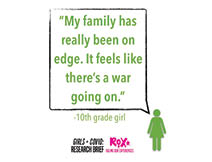
For anyone who has spent time working in schools, you know that while the primary focus of the K-12 environment is the academic instruction of students, a host of other student needs are addressed in schools. The work we do goes well beyond academic curriculum and concurrently addresses the social, emotional, interpersonal, and mental health needs of our students.
As we collectively traverse this new landscape, it is of critical importance that we understand how our students are faring and specifically what they need and want from the adults in their lives during these unprecedented times. As an educator and researcher with a specific focus on the lived experience of girls, I wanted to understand how girls are impacted by the pandemic and what we need to do to best support them. Through conducting and publishing a national survey with more than 1,200 girls in grades 5 through 12, we are learning that disconnection, isolation, and stress are plaguing teen girls and that their negative emotions and fears about the future are pervasive and distressing.
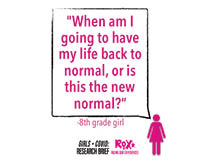
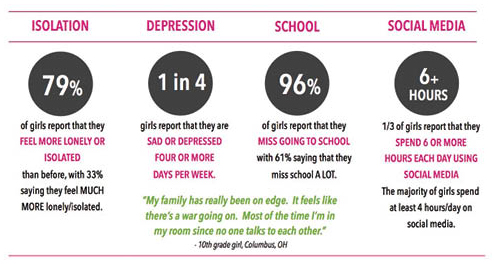
Nearly 80% of girls report that they are more lonely and isolated since the onset of COVID-19 and 58% are uncertain or scared about their future. Loneliness and isolation are concerning for all teens, however, they can be particularly distressing for girls. In general, girls more than boys tend to define themselves based on their relationships with others.
Their connections, friendships, and relationships are critical to their identity development, and when isolated or disconnected, girls can become increasingly withdrawn, depressed, or anxious. With a pre-COVID diagnosis rate of depression and anxiety at 4:1 compared to boys, girls were already at an increased risk for experiencing negative interpersonal outcomes and mental health issues. Now, with limited opportunities for connection, disrupted school, minimal or no extracurricular and social activities, and no real end in sight to the pandemic, we must be diligent in our approach to providing support to all of our students, with a particular focus on those who are most vulnerable—including girls. As the response to the COVID-19 crisis continually changes based on new data, science and political conditions, the support we need to provide girls must be timely and responsive as well. Here are some ideas:
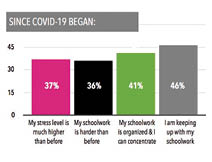
1. Provide girls with opportunities for relationship building and connection through meaningful and safe in-person and virtual activities. Throughout the duration of this pandemic, we must work diligently to ensure that virtual connections and communication between girls is not viewed as secondary, or less than, in-person interactions. Nearly 40% of girls report that since COVID-19 their relationships are harder than before and because girls likely have little control over whether or not they can spend time face-to-face with their peers, we must create real opportunities for them to socialize, have fun, explore, and create with their friends.
2. Create innovative ways for girls to experience key developmental tasks, culminating activities and long-awaited milestones. Over 50% of girls report that they are missing out on important things. Perhaps, rather than simply canceling all events and activities that typically take place in person, we can explore opportunities to create meaningful, fun, and safe substitutes. Obviously, this is not possible with all activities, but work with your girls to creatively explore ways that celebrations such as graduations, recitals, performances, birthdays, speeches, and science fairs can still take place through virtual platforms, socially distant events, and synchronous and asynchronous engagement opportunities.
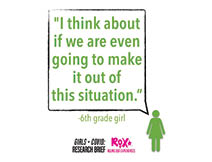
3. Increase individualized attention given to students, and screen students for signs of potential distress. During a typical school year, it is difficult to ensure that each student gets adequate daily attention from their teachers, counselors, and administrators. This year it is going to be even more difficult to have meaningful one-on-one interactions with students. However, it is precisely these individual points of connection that can provide insights into potential student distress and can allow for appropriate intervention. Ensuring that schools have systems in place to “see” students on a regular basis and ascertain their engagement, mood, behavior, appearance, and performance can not only subvert potential negative outcomes but can also ensure that a caring and engaged adult is invested in each student in a substantive way.
4. Ensure access for all students regardless of their family rules, circumstances, and responses to the virus. As rules and expectations surrounding COVID-19 have evolved with the changing social conditions and political climate, some girls find themselves excluded from activities and events due Ensure access for all students regardless of their family rules, circumstances, and responses to the virus. As rules and expectations surrounding COVID-19 have evolved with the changing social conditions and political climate, some girls find themselves excluded from activities and events due to their family decisions and needs surrounding managing their family’s health. It is imperative that we recognize that all family decisions are difficult at this time and that offering engagement opportunities in a variety of formats is critical. This allows girls to be included and involved whether or not they have an immune-compromised family member, parents who are front-line workers, or for any other reason are limited from full participation in social, academic, or extracurricular activities.
As educators, we have an opportunity to ensure that our students are supported, protected, and insulated, to the best of our ability, from the potential devastating effects of this current crisis. Together, we can take small steps to ensure that no student falls through the cracks and that no girl is left behind.
Lisa Hinkelman, Ph.D. is an educator, counselor, author and researcher and is also the founder of Ruling Our eXperiences (ROX), a national nonprofit organization focused on research, programming and professional development centered around girls.
![]() lisahinkelman@rulingourexperiences.com
lisahinkelman@rulingourexperiences.com
www.rulingourexperiences.org
Published in AMLE Magazine, October 2020.
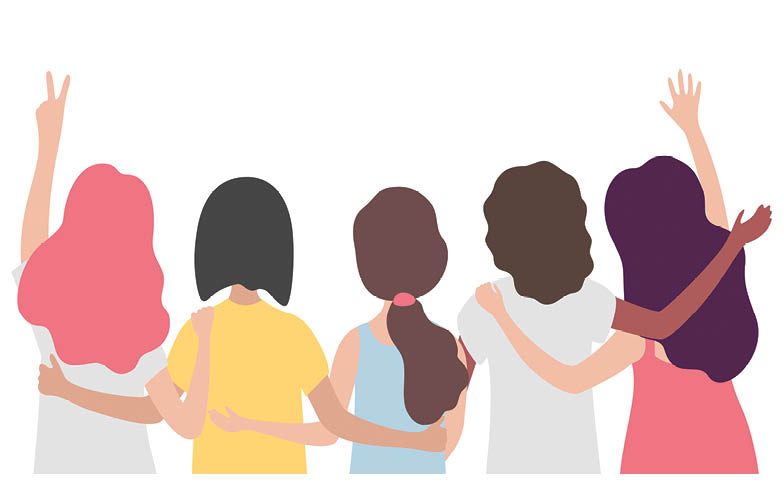
This was a very interesting read, as I had not considered how the pandemic and school shut downs may be having different effects on students based on their gender. Finding ways to create a more community driven atmosphere can be challenging in an online environment, but as Hinkelman noted, this social environment is critical to the well being of female students (perhaps more so than their male peers). I also like the idea of finding alternative ways to celebrate things like graduations and I feel occasions such as birthdays or gaining a driver’s license should be grounds for some kind of celebratory acknowledgement as well, as these are important milestones for students and their being noticed by the teacher is likely to help build a sense of community and inclusion.
I remember the pandemic being hard on me, but I thought it was because I was a high school senior and I was missing the best year of high school because of a virus. I never realized that younger women were also struggling because I was selfish, just like many people were during this time. Now that we are two years free of the stay-at-home order, I think this post will be helpful for me to use to make sure my female students are being taken care of emotionally and mentally. I also think many of these ideas could be used with male students.